It is said of my favorite saint, the indomitable Joan of Arc, that she could hear the voices of her saints and angels in the bells of her parish church whenever they were rung. The key word there is “in”.
 The bells and the voices were one and the same to her from the day she was first approached by her heavenly patrons in her father’s garden (she was 13 then) until the last days of her life and her horrible death at the age of 19. Bells were the medium of communication.
The bells and the voices were one and the same to her from the day she was first approached by her heavenly patrons in her father’s garden (she was 13 then) until the last days of her life and her horrible death at the age of 19. Bells were the medium of communication.
Joan had a mystical sense of bells. The experience was lodged so deeply in her soul that she could never describe it clearly except to say that it happened. It was beyond words. Before the bells rang she was a regular girl. After they began to ring, she communed with angels and saints.
The reality was that the sounds of the holy bells drew her to heaven, or perhaps, drew heaven down to her in a very tangible way. It is the same for every one of us.
Bells for Worship
My first Mass serving as an altar boy involved bells, but it was slightly less climactic than Joan of Arc’s mystical experiences. I was excited because I got to ring the bells at the side of the sacristy door to announce the entrance of the priest.
But since I was small of stature, I had to reach up to pull the bell cord, and admittedly I pulled it way too hard—okay, I really yanked on it. The people in the church probably thought the fire brigade was at the door.
 It was a less-than-stellar beginning to my altar serving career, but I have to admit: bells are wonderful ways to draw us into worship—when they’re rung correctly, that is.
It was a less-than-stellar beginning to my altar serving career, but I have to admit: bells are wonderful ways to draw us into worship—when they’re rung correctly, that is.
And, as we know, altar boys have another privileged bell-ringing function at Mass. They ring the tinkling bells at the consecration.
Like Joan of Arc’s experience, we can discern a before and after at every Mass: before the bell, our Lord is not sacramentally present. After the bell, He is there, and we adore Him in the sacrament of the altar.
That, more than anything, explains the bell’s true vocation: it calls us to worship.
A Life of Their Own

Image: The Angelus, by Jean Francois Millet, 1859.
In her classic text on mysticism, English author Evelyn Underwood wrote that “To be a mystic is simply to participate here and now in that real and eternal life; in the fullest, deepest sense, which is possible to man.” But I believe bells participate “in that real and eternal life” too.
In a way, they almost seem to come alive when they ring, like a giant woken from sleep, who has a message to tell the whole world or a hearty song to sing. The bell-makers of old had that same mystical intuition about bells and endowed them with numerous qualities of life that might not be apparent just in the hearing. For example:
They blessed them
Bells are not sacraments, of course, but as devotional items (sacramentals), bells are made holy by the rites of the Church and can be blessed, anointed, consecrated, and exorcised in order to fulfill their sacred function.
They named them
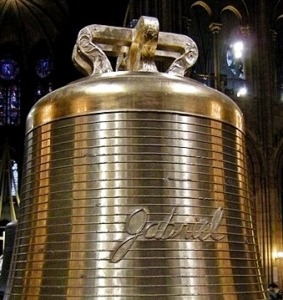 Patrons, donors, and authorities often named bells after people, especially saints, although there are many cases where donors named them after themselves!
Patrons, donors, and authorities often named bells after people, especially saints, although there are many cases where donors named them after themselves!
They “baptized” them
When a bell was ready for its public debut, the ceremonial blessing with holy water was often described as a “baptism” of a bell, and in that vein, dignified persons were often named as godparents of the bells, as in the largest bell of the Notre Dame Cathedral in Paris, of which I will speak below.
They inscribed them
Inscriptions on the outsides of bells can be crafted through raised letters on the shell or inscribed/carved into the bell’s metal casing itself. Inscriptions can be in the form of dedications, prayers, scripture quotes, or all of the above, to signify the deeper spiritual meaning of a bell’s existence.
They tuned and harmonized them
The multiple bells of a cathedral are not just forged in a foundry and placed into a tower. Each bell must ring in harmony with all of the other bells in the cathedral’s structure so that no sour notes came from the church! Bell-makers employ elaborate methods of tuning bells by means of the thickness and quality of the metal.
They personified them
This is my favorite mystical dimension of bells. Although the clapper on the metal makes bells sing, the makers of the bells make them speak. For example, while reading a wonderful article about bells, I noted an ancient Latin inscription that was sometimes used in the rite of blessing and which portrayed the bells speaking metaphorically about their own contribution to worship:
“Laudo Deum verum, plebem voco, congrego clerum, defunctos ploro, nimbum fugo, festa decoro.”
(I praise the true God, I call the people, I gather the clergy, I cry out for the dead, I scatter the storm clouds, I adorn the sacred days.)
Yes, bells seem to have a life of their own when employed in the Lord’s service. It’s no wonder to me that Joan of Arc heard her voices speaking to her whenever the sound of a church bell resonated in her ears. It was her soul that was mystically “hearing” what heaven wanted to say to her.
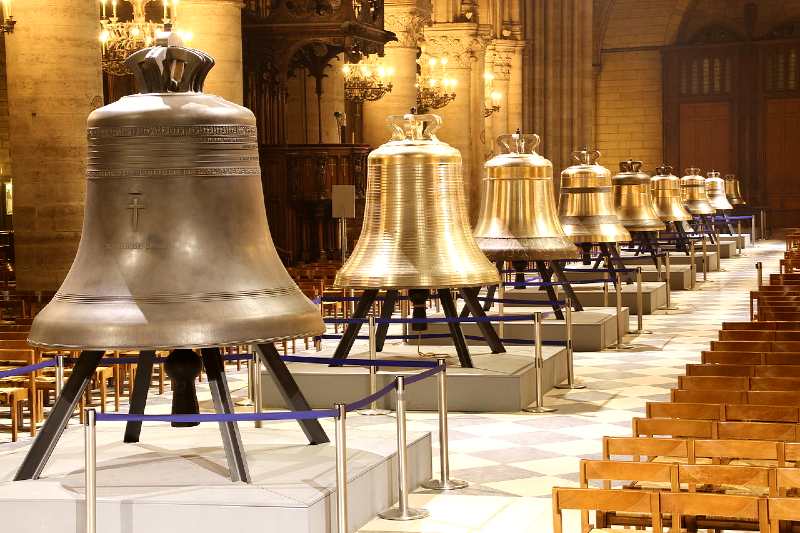
The Bells of Notre Dame
The world was horrified and shocked at the fire that gutted the venerable Notre Dame Cathedral in Paris in April of 2019. But it was not the end of that most important place of worship. Thankfully, eight of Notre Dame’s 12 major bells survived the fire intact while the ones in the spire were destroyed. The cathedral has a total of 21 bells.
The bells you see in this picture (excepting the largest) were forged in 2012 to commemorate the cathedral’s 850th anniversary. The 2012 bells replaced the previous set of bells that had been ringing in the towers and spire since the late 1800s.
The only bell that remained from the old set was the largest one, called Emmanuel, seen in the foreground. It weighs 15,000 lbs! It’s clapper alone weighs 1,106 lbs! The bell’s history is amazing.
The Ineffable Emmanuel
 In 1400 a nobleman Jean de Montaigu donated a very large bell and called it Jacqueline in honor of his wife (how nice), but this bell went through numerous recastings in subsequent centuries, and it eventually broke (think of our Liberty Bell). This unfortunate event should not be construed as a commentary on the Montaigus’ marriage.
In 1400 a nobleman Jean de Montaigu donated a very large bell and called it Jacqueline in honor of his wife (how nice), but this bell went through numerous recastings in subsequent centuries, and it eventually broke (think of our Liberty Bell). This unfortunate event should not be construed as a commentary on the Montaigus’ marriage.
In 1685, Jacqueline was then recast as Emmanuel. It was tuned to F# and bore two inscriptions (in Latin and archaic French). The most interesting inscription perfectly expresses that wondrous personification I spoke about above:
I am what was first Jacqueline, Jean the count of Montaigu’s gift of 15,000 pounds, now enlarged by double, Emmanuel-Louis-Thérèse I am named by Louis the Great and Maria Theresa his wife; and by François de Harlay, first of the archbishops of Paris, duke and peer of France, blessed on 29 April 1682. Florentin le Guay, native and master [founder] of Paris, has made me in 1685.
Historical note: the reigning King Louis XIV and his queen Maria Theresa were invited to be the godparents of the bell, which is why it is sometimes called the Emmanuel-Louis-Thérèse bourdon (a fancy name for a very large bell).
Very Brief History
Allow me to give you an extremely brief history of the cathedral’s bells, which are like sacred windows of sight and sound. Even in a thumbnail sketch like this, the history is more varied and interesting than you might imagine:
- There is no exact information about how many bells the cathedral had when it was built in the 1100s, but the first bell ringing at Notre Dame was recorded in it 1198 AD—wow!
- By the early-1300s eight bells were documented with the names of Marie, Gilbert, Guillaume, Pasquier, Chambellan, Louis, Nicholas, and Luc.
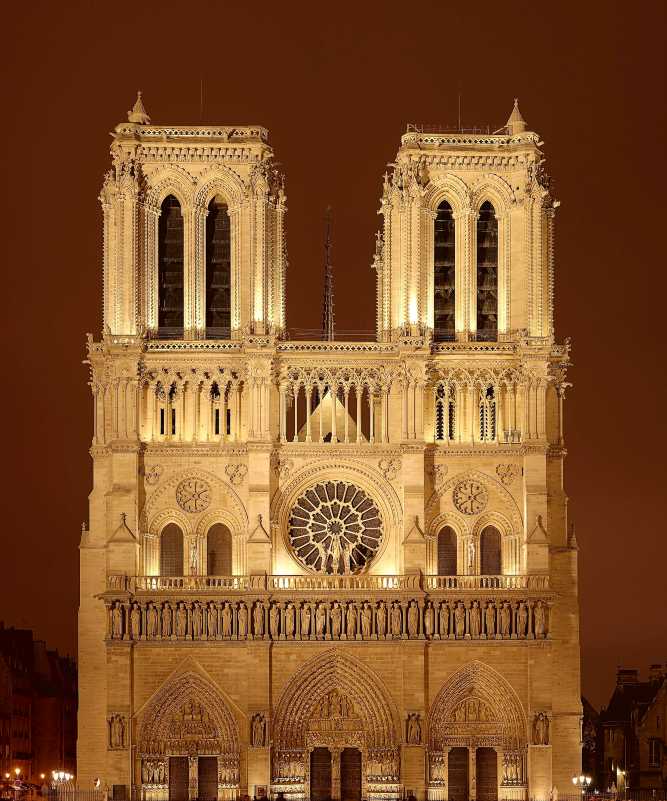
- In 1453, Thibault de Vitry, a minor local official in Paris, donated a bell called…Thibault. Sure, why not name one after yourself?! (Word has it that old Thibault never lacked self-esteem and probably thought he was a “resounding” success as a politician.)
- By the 1500s five more bells were added (Catherine, Magdelaine, Barbe, Anne, and an unnamed fifth bell).
- 1680 was the year when the Jacqueline bell broke, leading to the creation of Emmanuel. It is a national treasure and considered to be one of the largest and greatest bells in the world.
- The satanic forces of the French Revolution (1791-1794) melted down 80% of the country’s church bells for coinage or cannon, including nine of Notre Dame’s major bells. Only Emmanuel and three choir bells were spared.
- Fun fact: notwithstanding Victor Hugo’s famous novel and a proliferation of Disney movies, there is not, nor has there ever been, a hunchback named Quasimodo who rang the bells at Notre Dame!
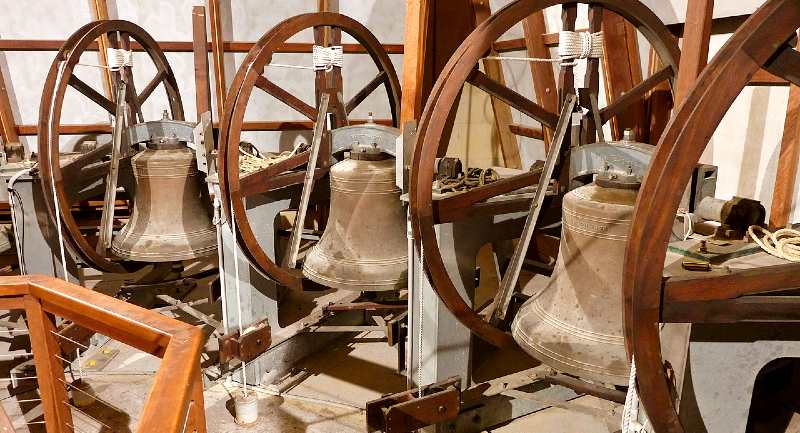
Today’s Bells
After the fire in 2019, another two bells were added to the Notre Dame chorus of bells. These were named Chiara and Carlos to commemorate two young blesseds on their way to canonization in the Church.
Then, a final bell was added to commemorate the 2024 Olympics, bringing today’s total to 13 bells. I’ll conclude with their names and relevant statistics:
- Emmanuel (Named for Jesus Christ / 7.5 tons / tuned to F#)
- Marie (Virgin Mary / 6.5 tons / tuned to G#);
- Gabriel (Archangel Gabriel / 4.4 tons / tuned to A#)
- Anne-Geneviève (double patronage: the Mother of Mary and the patron saint of Paris / 3.3 tons / tuned to B)
- Denis (1st Bishop of Paris / 2.6 tons / tuned to C#)
- Marcel (9th Bishop of Paris / 2.1 tons / tuned to D#)
- Benoît-Joseph (Pope Benedict XVI / 2,886 lbs. / tuned to F#)
- Maurice (73rd Bishop of Paris / 2,229 lbs. / tuned to G#)
- Étienne (St. Stephen, first martyr / 2,200 lbs. / tuned to E#)
- Jean-Marie (former Cardinal of Paris / 1,724 lbs. / tuned to A#)
- Olympic (1,102 lbs. / tuned to D#)
- Chiara (Bl. Chiara Badano / tuned to F#)
- Carlos (Bl. Carlos Acutis / tuned to G#)
I’m sure you’ll agree that few things are lovelier than the sounds of bells, especially when they seem to come alive, touch our souls, and raise our souls to worship. Mystical is the only adequate name for it.
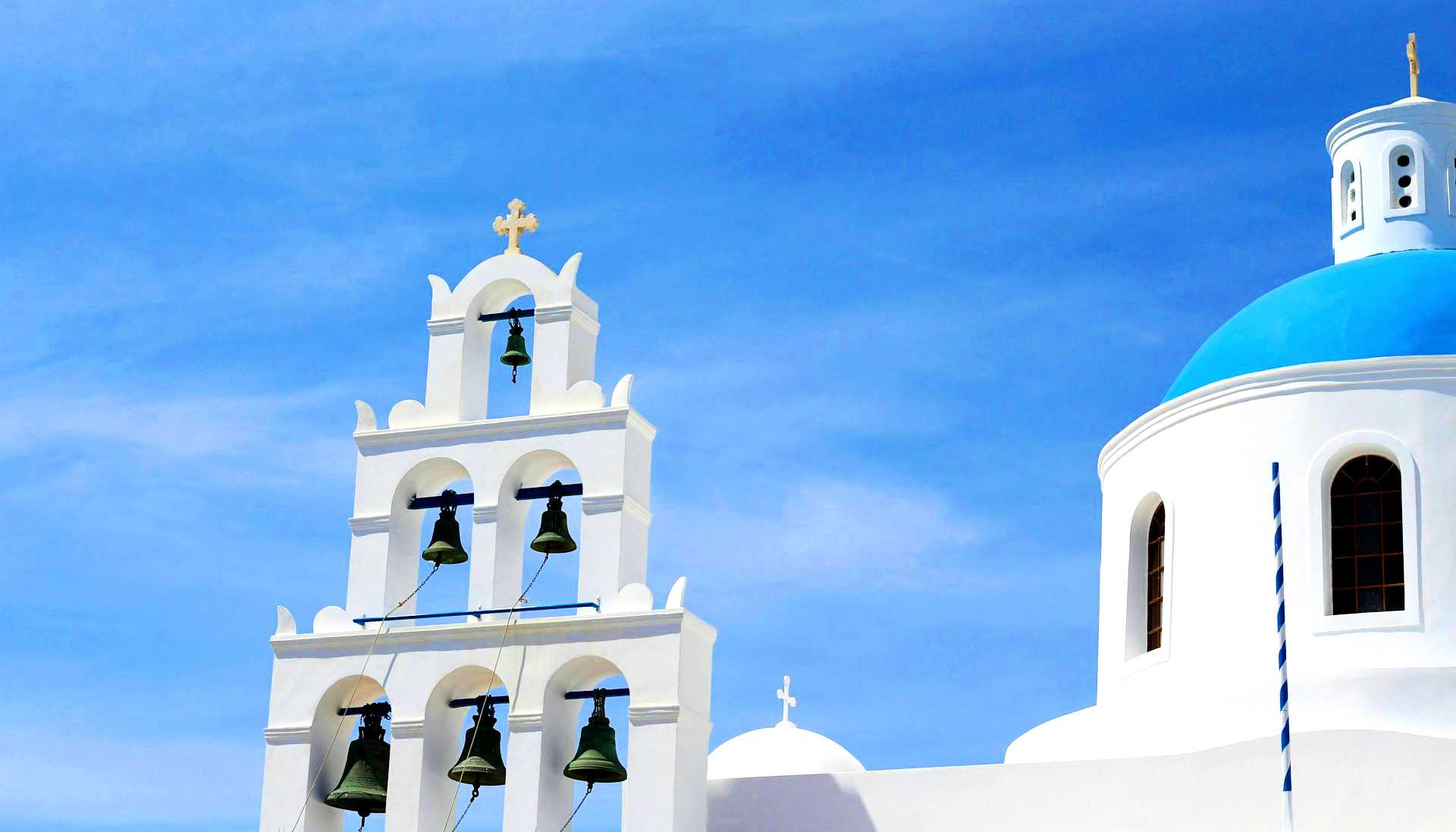
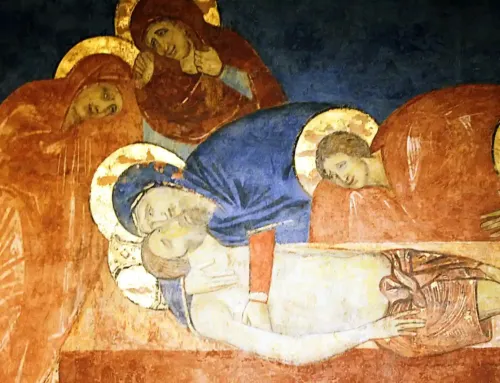
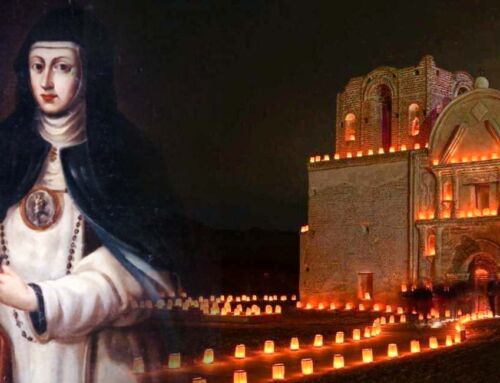
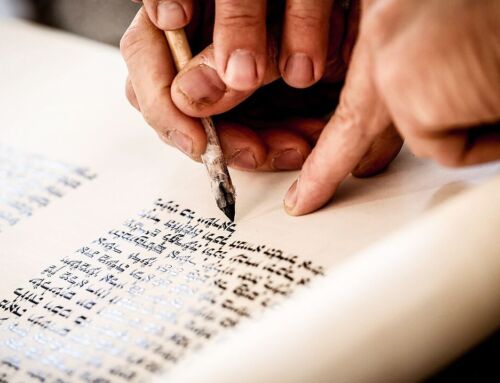
Leave A Comment